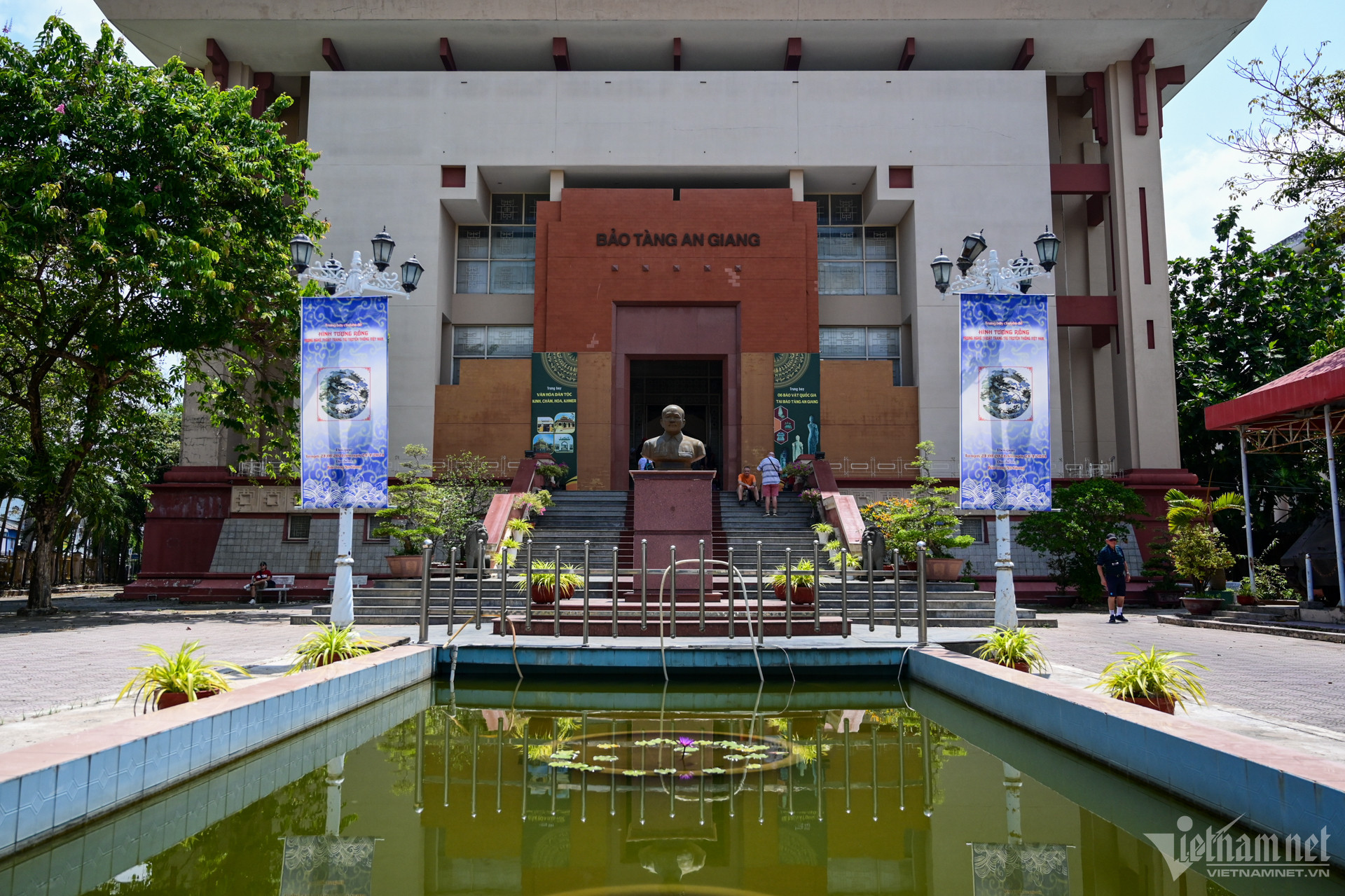
The southern province of An Giang is home to eight national treasures from the Oc Eo culture, a civilization over 3,500 years old. Two of these artifacts are housed in the Oc Eo Cultural Exhibition House in Thoai Son district, while the remaining six are on display at the An Giang Museum in Long Xuyen City.
The Oc Eo culture was part of the ancient Funan Kingdom, one of Southeast Asia's earliest civilizations, dating from the 1st to the 7th century AD. French archaeologist Louis Malleret first discovered and excavated Oc Eo relics in 1944 at the Oc Eo mound in Vong The commune, Thoai Son district, An Giang province.
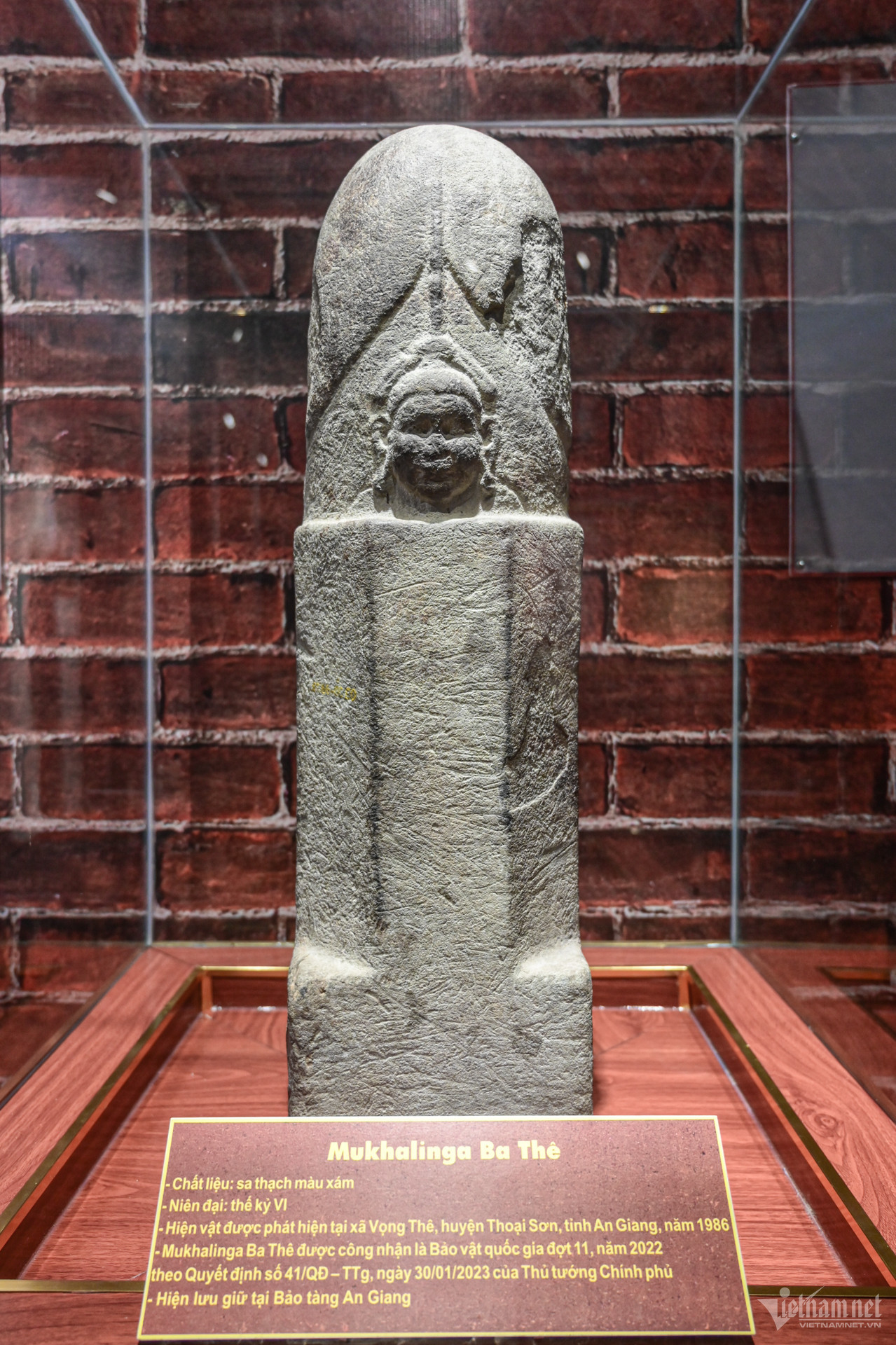
One of the most significant pieces is the Mukhalinga Ba The, recognized as a national treasure in 2023. This 6th-century artifact, made from fine-grained gray-black sandstone, features a mukha (face) sculpted into its design, symbolizing the deity Shiva.
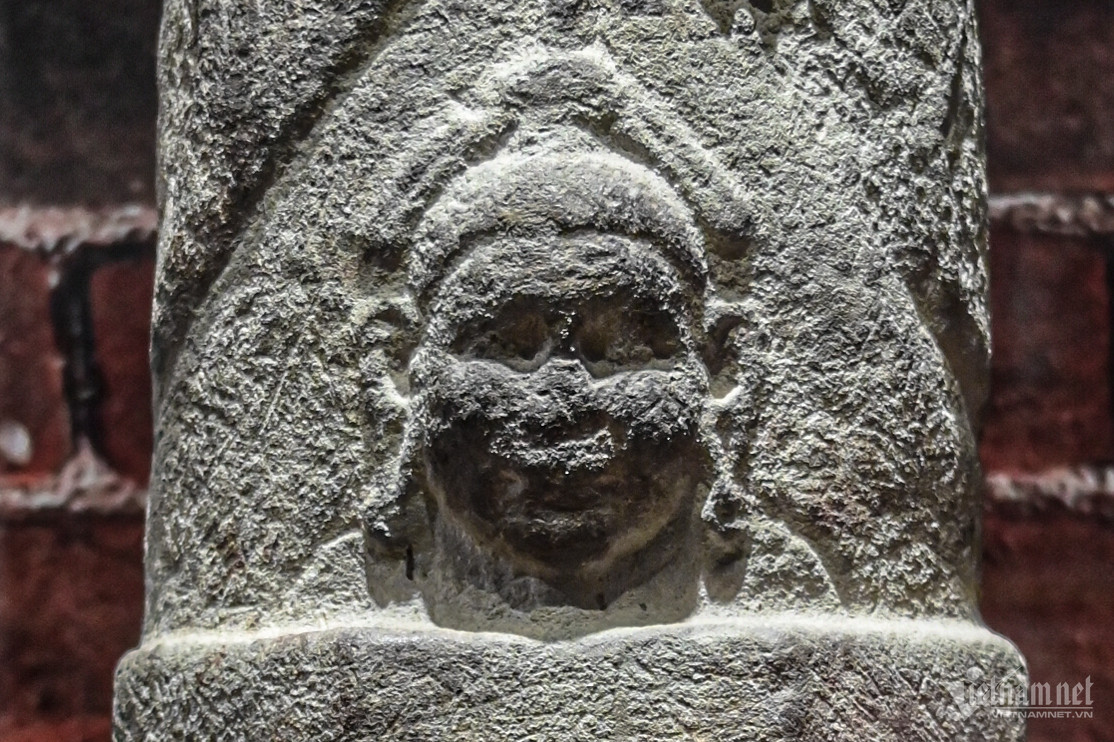
The linga stands 91 cm tall and 20–22 cm wide, reflecting strong Indian cultural influences and showcasing the cultural exchange between the Oc Eo civilization and Indian culture.
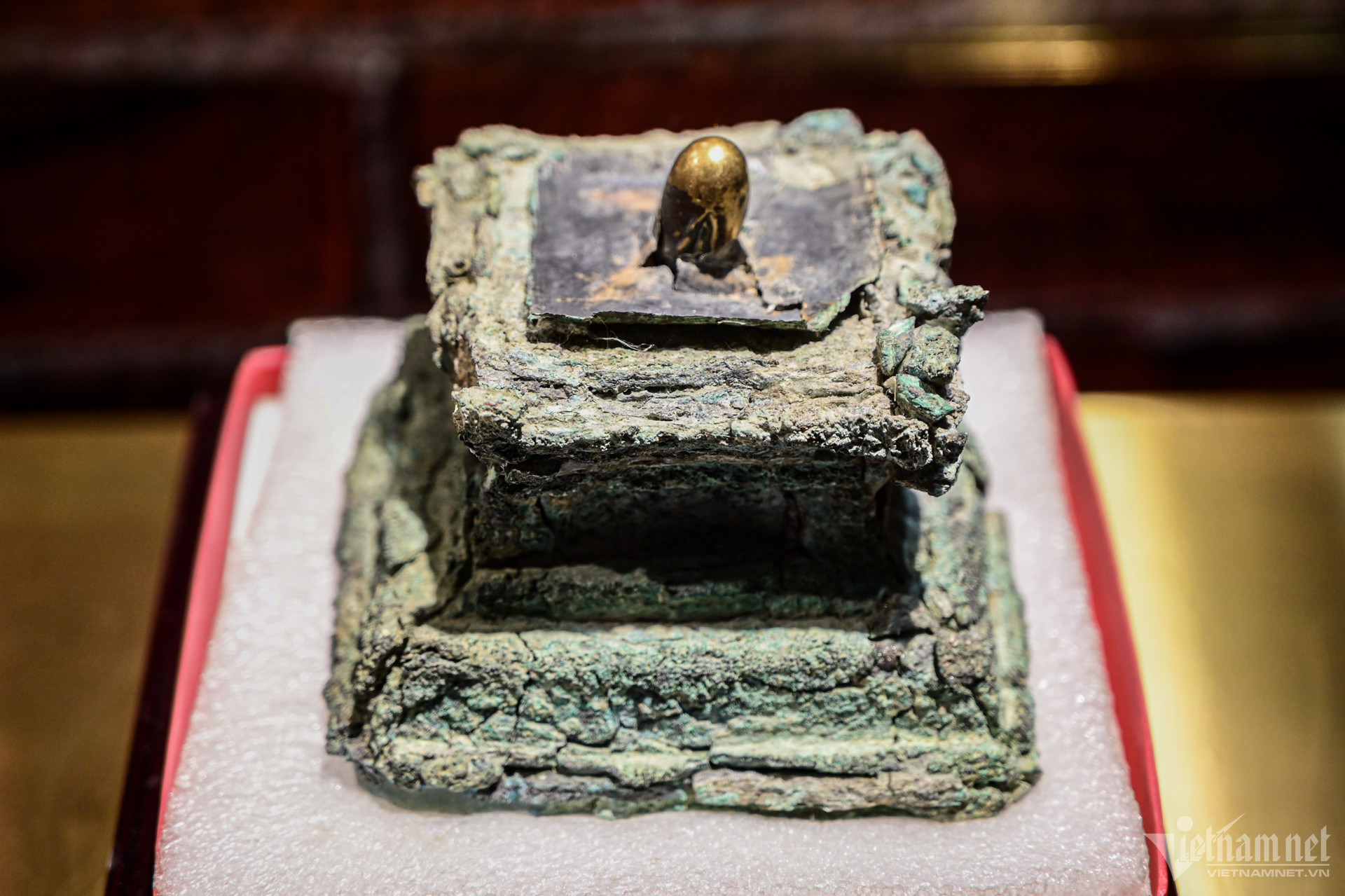
Another remarkable artifact is the Linga-Yoni set, discovered during the 1985 excavation of the Da Noi site. Recognized as a national treasure in 2018, it is the only Linga-Yoni made of gold and brass, dating back to the 5th–6th centuries. The artifact stands 10 cm tall, 12.2 cm wide, and weighs about 2.6 kg. Its intricate design symbolizes the Hindu religious concepts of creation and reflects the artistic creativity of ancient craftsmen.
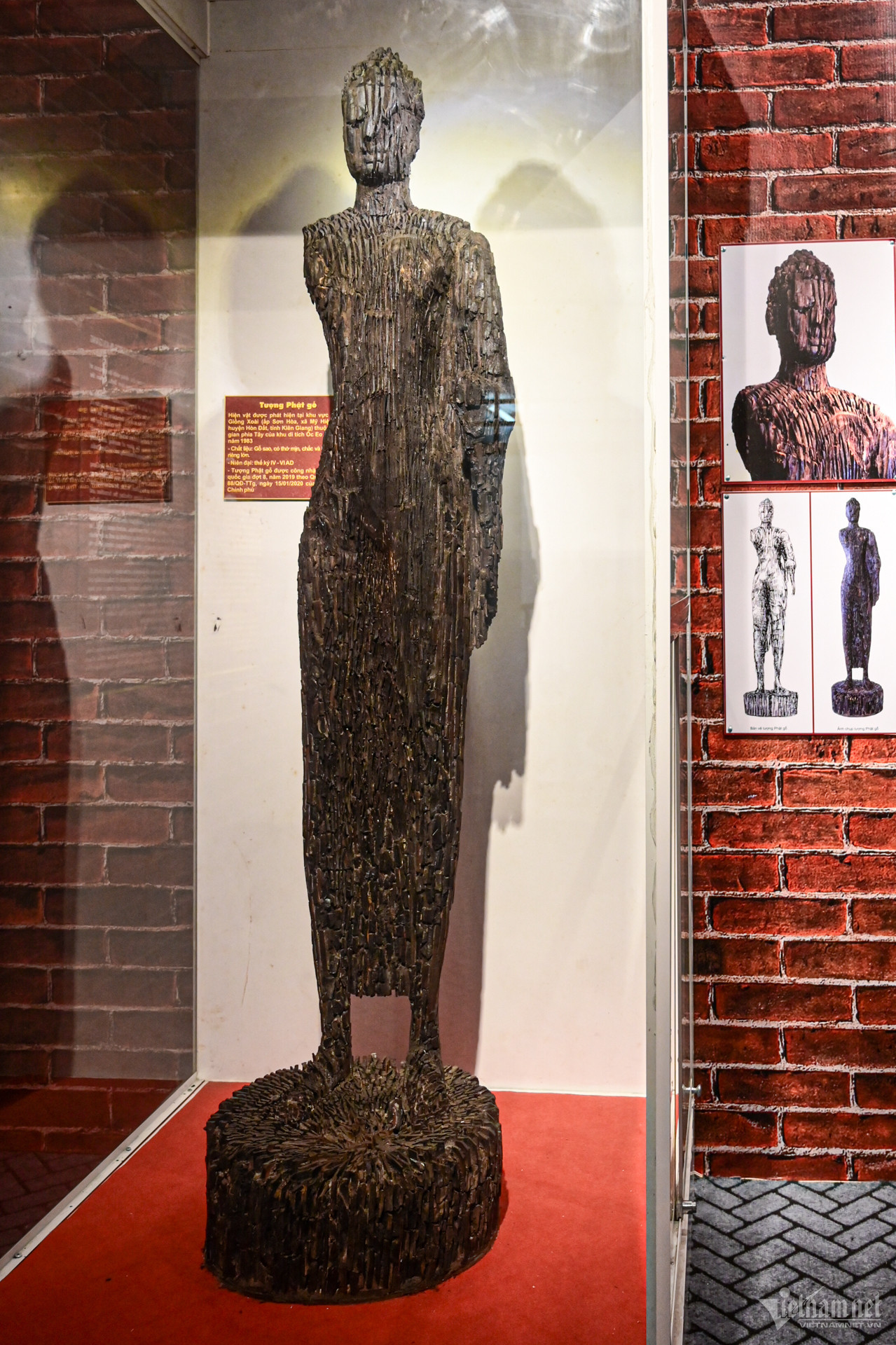
The Giong Xoai Buddha statue, dating from the 4th–6th centuries, is carved from a solid block of sao wood. Standing at 2.7 meters tall and weighing 94 kg, this statue was declared a national treasure in 2019.
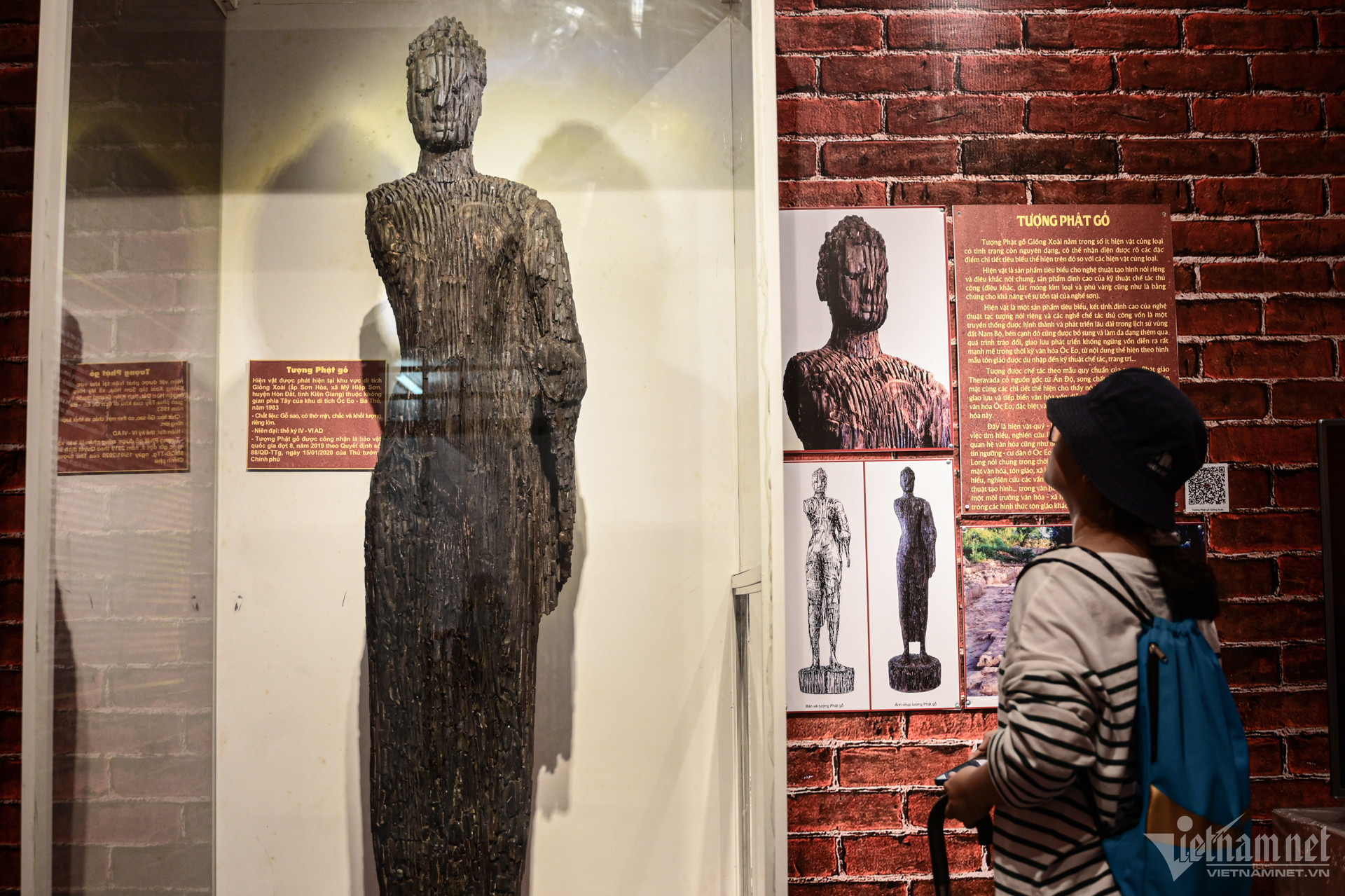
Despite its damage, the statue reveals the strong cultural interactions during the Oc Eo period, blending Indian Theravada Buddhist influences with local artistic expressions.
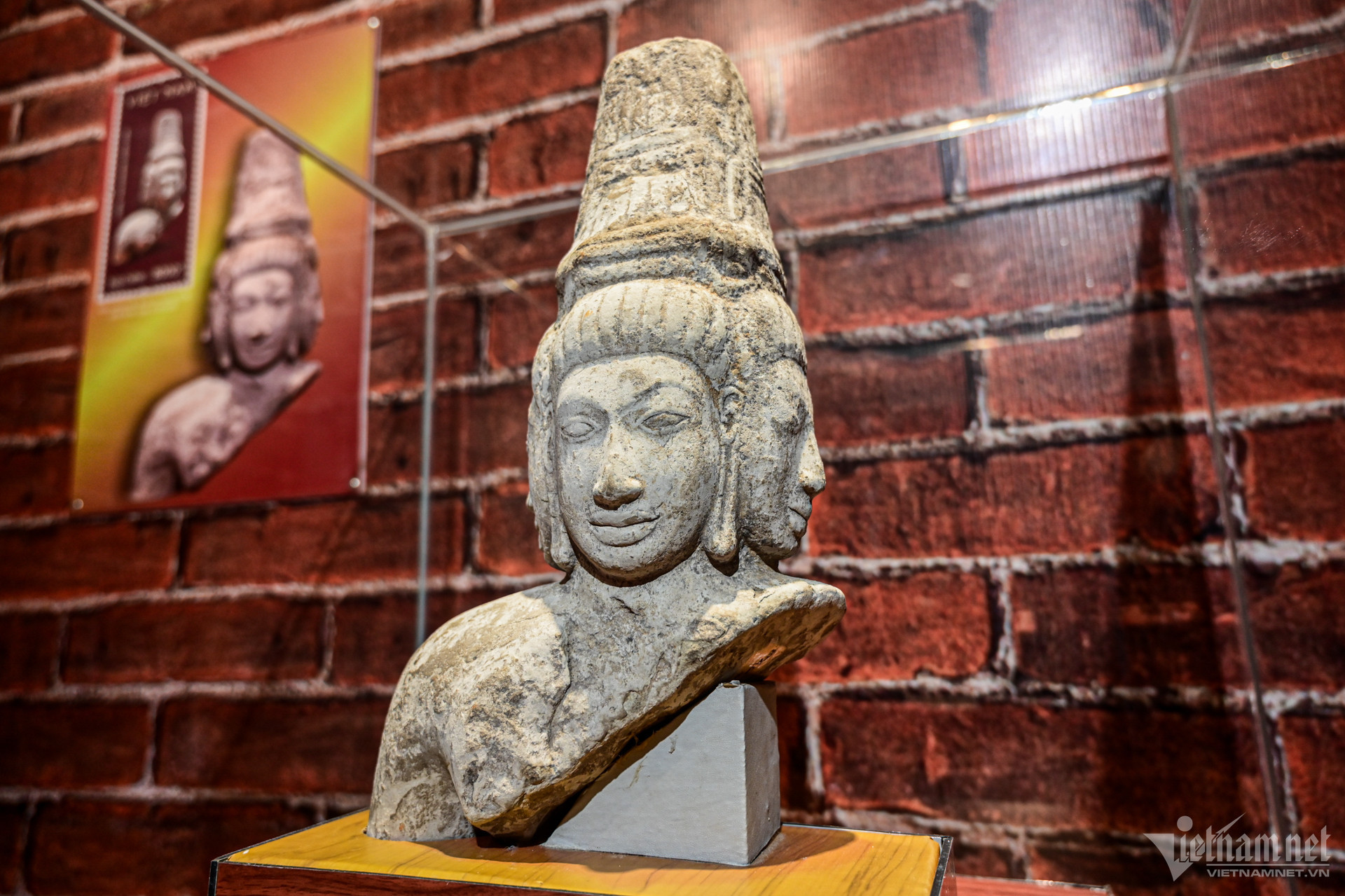
The Brahma statue from Giong Xoai, discovered in 1983, dates back to the 6th–7th centuries. As the earliest and only Brahma statue from the Oc Eo culture, it is a unique artifact reflecting the artistic and cultural exchanges between the Oc Eo civilization and Indian culture.
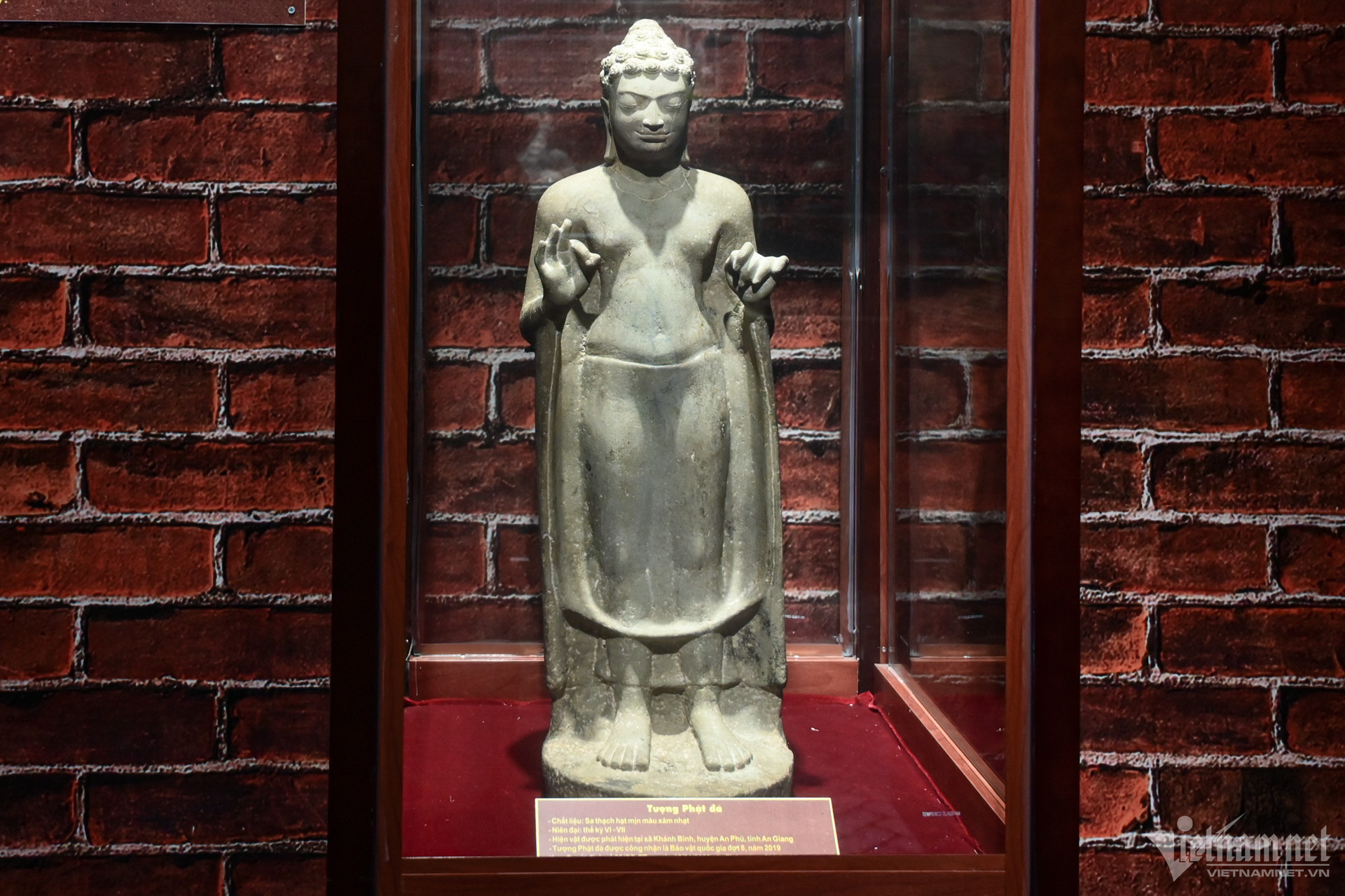
The Khanh Binh Stone Buddha, standing 71.2 cm tall and weighing 33 kg, is a finely crafted sandstone statue depicting the Buddha in a balanced standing pose. It represents the Theravada Buddhist traditions and artistic exchanges of the Oc Eo culture.
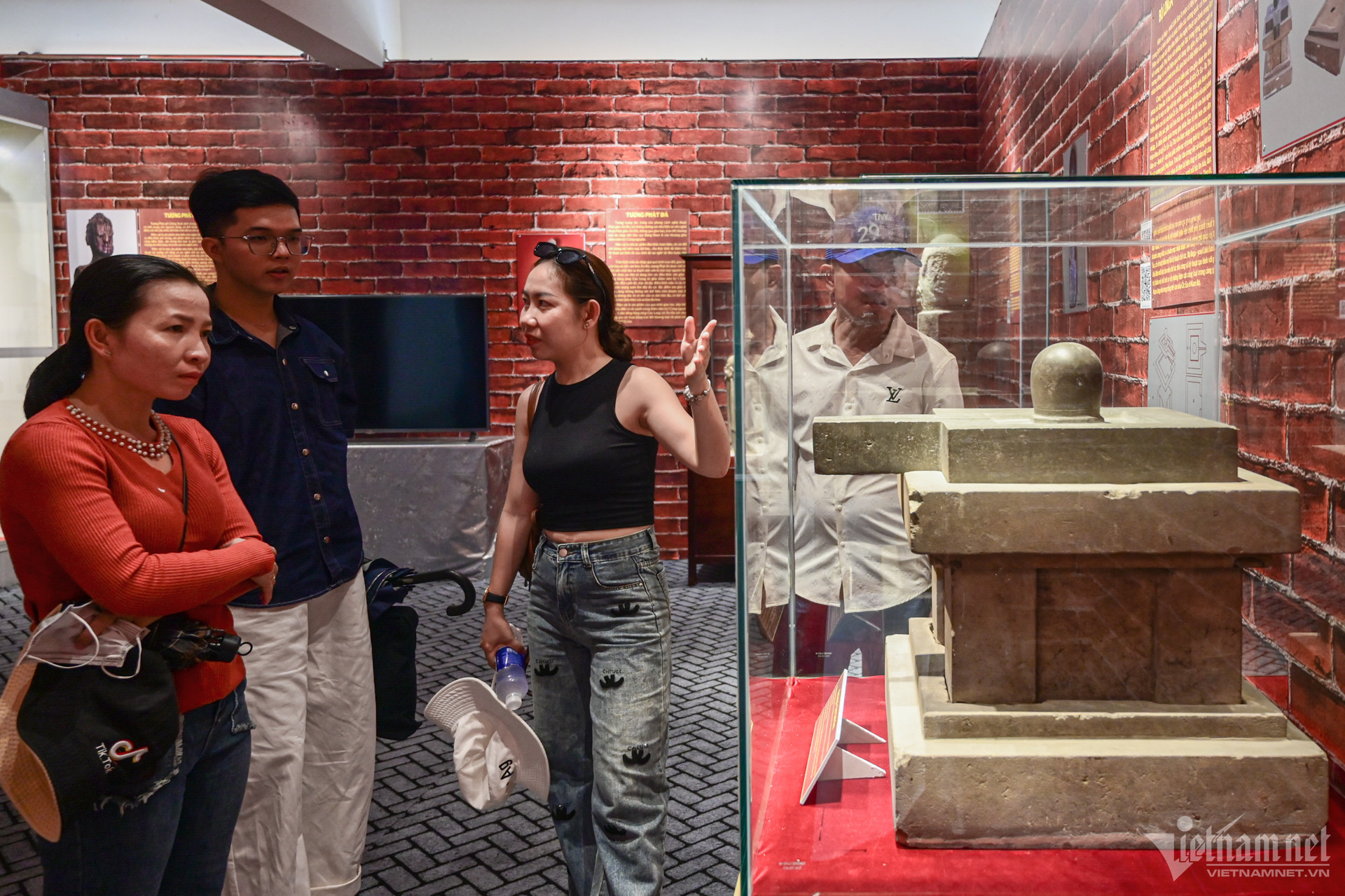
Finally, the Linh Son Linga-Yoni, found in 1985 at Linh Son Pagoda in Thoai Son district, dates back to the 7th century. Recognized as a national treasure in 2020, it features a combination of two different stone materials, highlighting its aesthetic and religious significance.
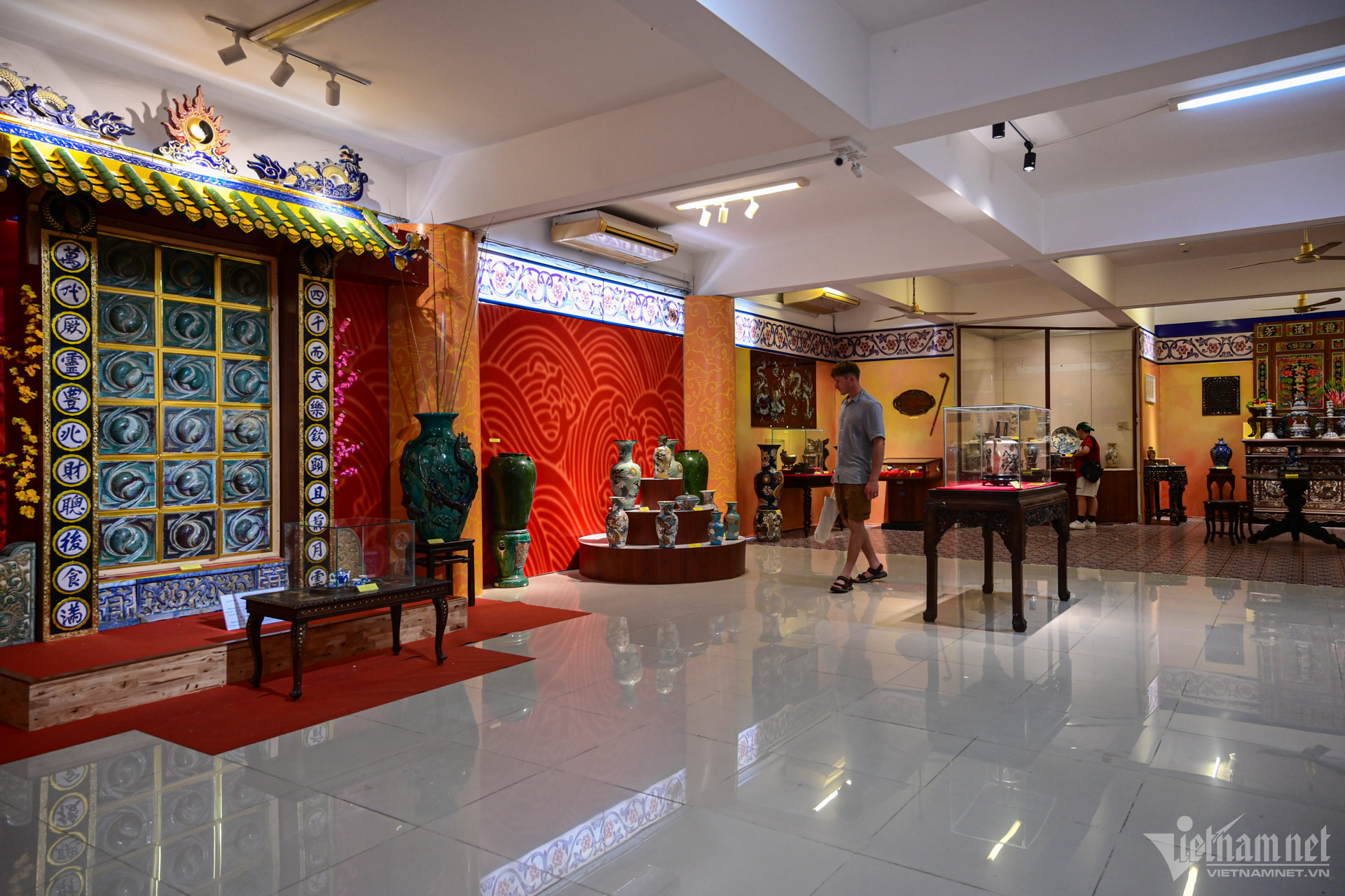 |
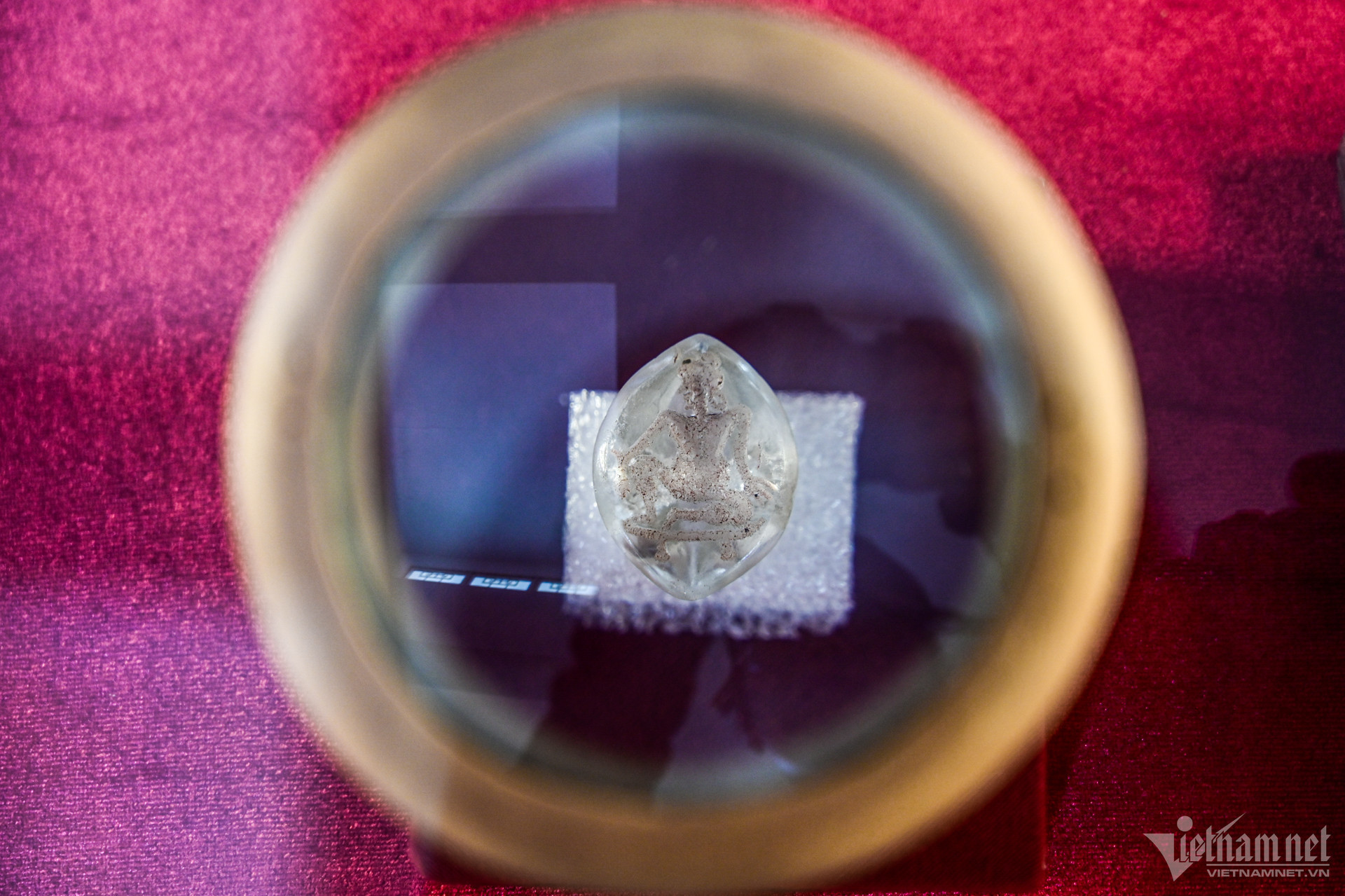 |
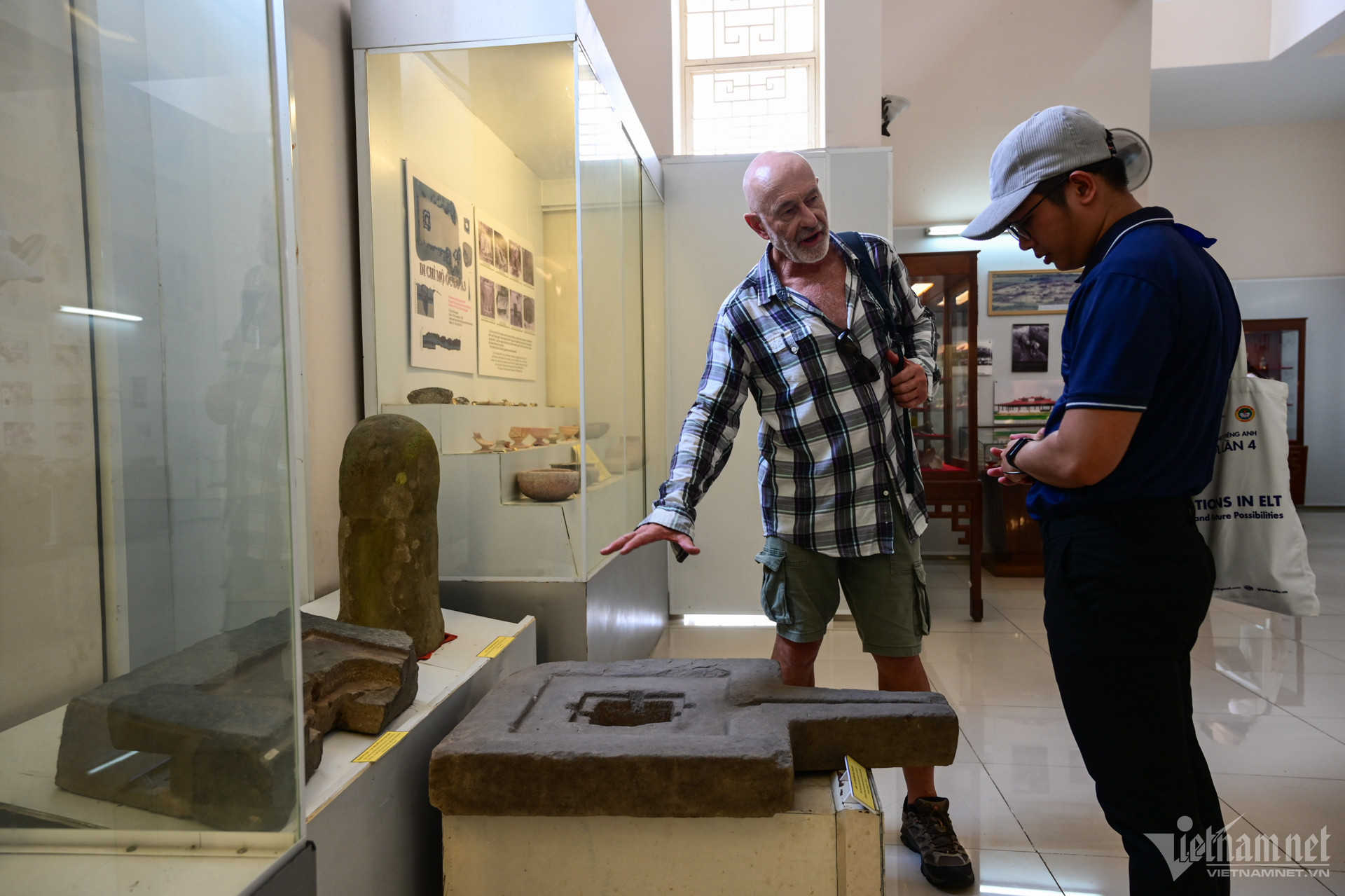 |
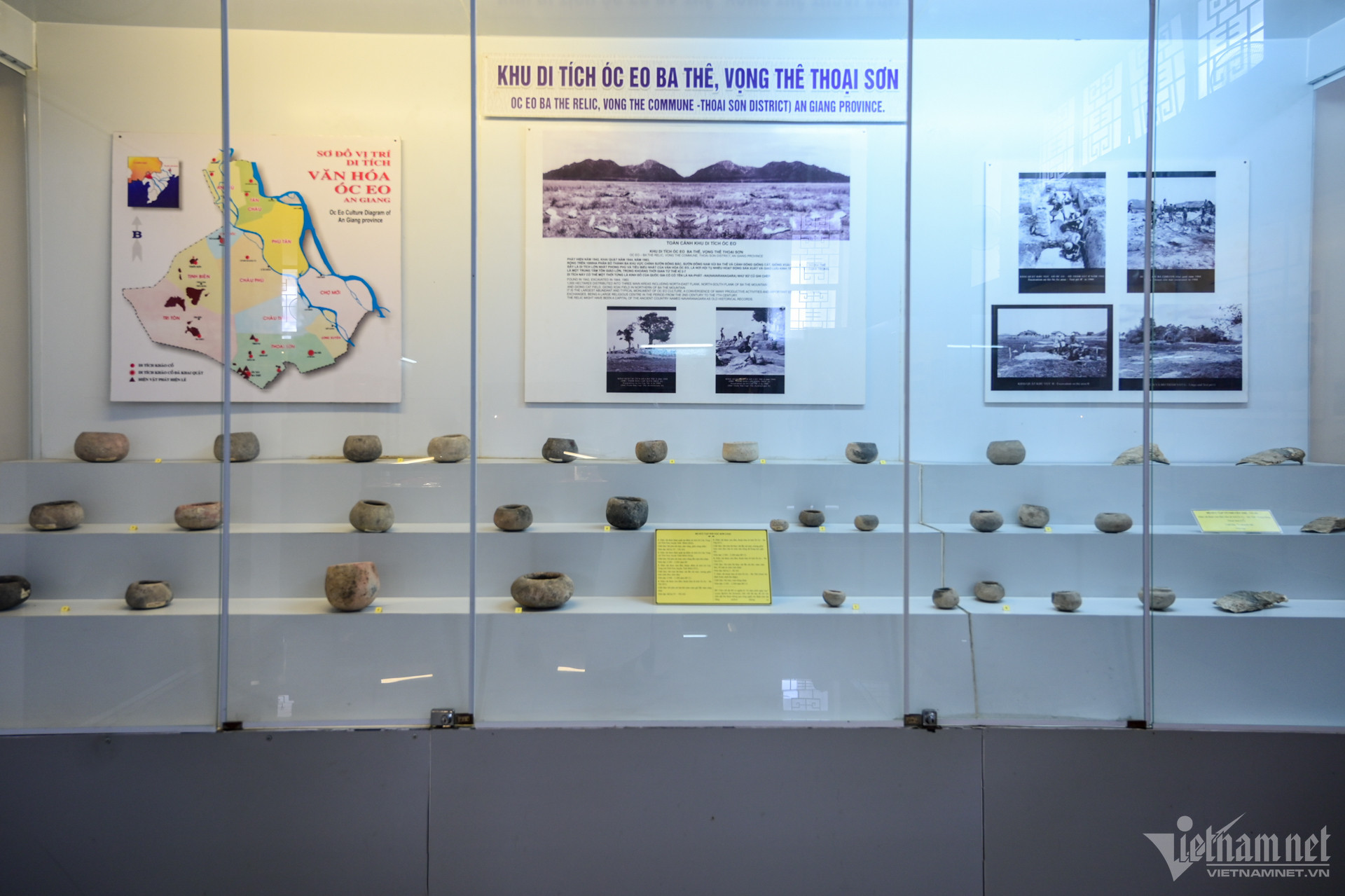
In addition to these national treasures, the museum houses numerous other Oc Eo artifacts, alongside exhibits that document Vietnam's heroic history, diverse cultural heritage, and the development of An Giang province.
Nguyen Hue